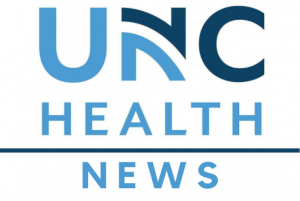The time will ‘spring forward’ from 1:59 to 3 a.m. on Sunday, March 13. Review these details to avoid any issues with equipment and Epic@UNC documentation.

Equipment
- All glucometers should be docked prior to running any patient tests after the time change Sunday morning to ensure that the glucometer records the time change. If glucometers are not docked, all tests performed after the time change occurs – but before the docking – will have the incorrect collection time on them.
Clinical Documentation
- MAR
In the MAR, medications normally scheduled between 2 – 3 a.m. are not automatically rescheduled. Instead, manually update the time in the administration window with the appropriate date and time.For example, a Q4H medication with a due time of 2:15 a.m. is documented and administered at 3:15 a.m. in the MAR. For medications given every one hour, any administrations not given during the skipped hour are documented as ”Not Given” with a comment of “Daylight Saving Time.” - Intake & Output
All running infusions and IV Piggybacks administered during the “Spring Forward” event should be calculated at as soon as possible after the time change. When completing the volume calculation after 0300, Epic@UNC will think there should be volume for the lost hour. All volume calculations after the time change should be done manually to avoid documenting incorrect IV volumes. - Graphs
Areas of the application that graph data over time continue to display the 2 – 3 a.m. hour. When evaluating graphs of clinical data over time, take into consideration that the 2 – 3 a.m. hour did not occur. This includes graphs in:- Documentation Flowsheets932E
- Results Review
- Synopsis
- Accordion reports
- Work List
In the Work list, tasks scheduled during the 2 – 3 a.m. hour will appear overdue. - Doc Flowsheets
In Documentation Flowsheets, volume calculations for infusion groupers should be manually calculated. If users attempt to automatically calculate volumes, the system will think the infusion was running an hour longer than it was actually running for.
Stork Obstetrics
- Labor length
Labors calculations spanning the time change can be up to one hour off. This issue affects both the Delivery Summary and filing labor lengths to Obstetrics History. For all labor calculations that span the time change, Epic recommends manually calculating the labor lengths and documenting this information in a note. Additionally, after signing the Delivery Summary, clinicians can access the Obstetrics History activity and manually update the patient’s labor lengths. This must be done via the Chart button, as editing on any specific encounter is not allowed. - Time since rupture of membranes
Calculations for ruptured membranes occurring prior to the time change can be up to one hour off. This issue affects report columns 54888-OB Rupture time since (Full Display) and 54889-OB Rupture time since (Abbreviated Display), and print group 82007-OB L&D Labor Summary Report. For calculations that span the time change, alert clinicians that during daylight savings events, the time since rupture of membranes is incorrect. - Time since last cervical exam
Calculations for cervical exams occurring prior to the time change can be up to one hour off. This affects report column 36202-OB Time Since Last Cervical Exam. For calculations that span the time change, alert clinicians that during daylight savings events, the time since last cervical exam is incorrect. - Hours of life
Calculations for a baby’s hours of life can be up to one hour off. Daylight savings events affect any location in Hyperspace where an infant’s patient age appears in hours, such as the patient header, print groups, report columns, and SmartLinks. For infants born prior to the time change, alert clinicians that during the daylight savings events, the hours of life calculation is incorrect.
OpTime and Radiant
- Since charging and procedure time averaging depend on the amount of time in between key events rather than the actual times, nurses should:
- Change the case tracking event times so that the amount of time between events is accurate.
- Add a nursing note that includes the actual times for that patient, even if it looks incorrect because of the time change.
- By documenting the correct amount of time and adding a note with the actual timing events, nurses ensure that the patient is charged correctly, that surgeons have appropriate time added to their average, and that the actual times are documented on the patient’s chart.
Anesthesia
- Epic recommends that Anesthesia users document on paper during time changes. It is very important that the Anesthesia chart reflect reality because it might be used as evidence in a court case and because inaccurate charting makes accurate billing difficult. Here are some examples of inaccuracies:
- For continuous medications, the calculated totals are not accurate. They look like they run shorter (during the fall DST event) or longer (during the spring DST event) than in reality.
- For device integration, the times recorded on the devices are automatically validated and cannot be changed when your Epic system receives them through the interface. As a result, they do not present an accurate record of the patient’s visit.
- For billing, the Anesthesia Start and Anesthesia Stop times used to calculate the length of the case are inaccurate.
ASAP Emergency Department
- During the spring daylight saving time, the system displays ASAP patients in the department for one hour more than actuality. Tracking times will be off due to the time change.